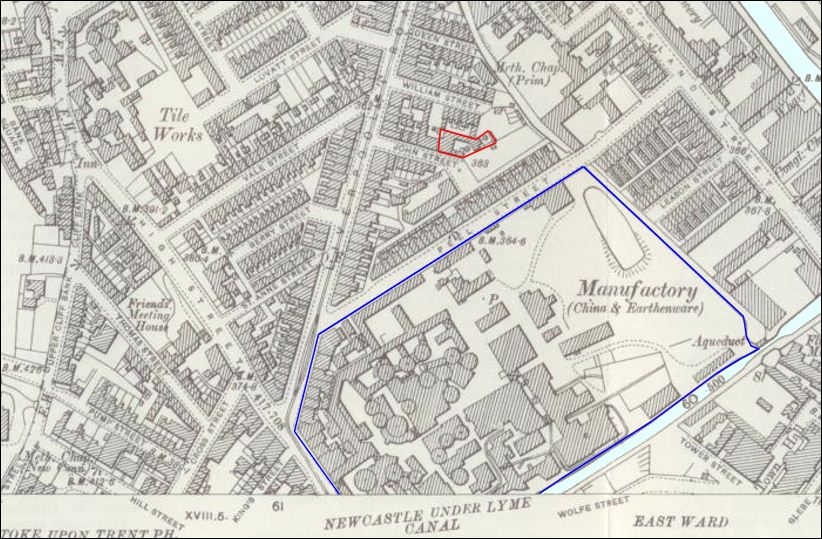-
William
Henry Goss studied at the School of Design, Somerset House, London. He
initially specialised in ivory porcelain and perfected a method of
improving the finish of jewelled porcelain, and invented the body and
enamels for the heraldic china by which he is best known today. [see
biography of W.H. Goss]
-
In
the late 1850's Goss obtained rights to use the madrepoarla
over-glaze, which had been improved upon from ancient lustres by
Brianchou, a French chemist-artist. This gave parian ware a unique
irridescent finish. An artist, Goss knew that the combination of
graceful shape and irridescent coating was in itself sufficient
beauty, but he also knew that the public might care for something more
spectacular for its money. For this reason he put to one side his
unnamed new discovery and continued his work in Parian.
-
From 1858
to c.1870 William Henry Goss was at the Cock Works in John Street (now
Leese Street), off Liverpool Road. He set up in business here on his
own after working at W.T.Copelands for about a year.
-
At
the 1861 census Goss was recorded as employing 14 men, 2 women and 34
boys.
-
Goss
exhibited at the Great International Exhibition of 1862 (held in South
Kensington, London)
He won an important medal for his display of parian war. Cassell's Illustrated
London News (15th Nov 1862) said 'The perfection of art
manufacture seems certainly to have been reached'
-
Goss
& Belleek:
|
McBirney
and Armstrong, small potters in the village of Belleek in Ireland,
obtained Goss's permission to carry on with the experimental
irridescent coating and were soon so successful, especially in making
it heat-resistant, that they finally hired away Goss's foreman and
several of his artists. Together the new group developed it chemically
and artistically, put it on the market with wonderful success, and for
want of a better name called it Belleek-Irish China.
In
1863 17 (12?) of his best men left him and went to work for Belleek in
Ireland taking with them the skill in making parian ware.
-
Under
the guidance of William Bromley (Goss's manager), William Wood
Gallimore, William Henshall (who introduced basket making and
flower modelling at Belleek) and a Mr. Ferran (a parian
caster) and the other of the 17 Goss men, Belleek started to
change manufacture from earthenware to high quality parian
ware.
-
Belleek
thrived under workmanship of the former Goss craftsmen and by
1865 were receiving orders from Queen Victoria for their
delicate parian ware.
|
-
Listed
in the 1868 Staffordshire Potteries' Directory as "Goss, William
Henry, John Street, Stoke-on-TrentóChina, Parian Statuettes, etc.,
Terra Cotta, Fire Clay, and Patent Goods."
-
Terracott
ware became fashionable and around 1868 William Adams Peake (a
terracotta roofing tile manufacturer) joined Goss in partnership as
and they traded as Goss & Peake.
Together they manufactured the reddish brown earthenware making wine
bottles, jardinieres and vessels Greek and Roman style - the
manufacture of this ware only covered the two years 1867-9.
-
By
early 1869 Goss's partner William Peake was jailed as a 'Prisoner for
Debt' and in June 1869 both Goss and Adams were declared bankrupt.
-
The
bankruptcy was discharged in September of 1869 and Goss continued on
his own - still at the Cock Works, John Street.
-
Around
1870 Goss transfered his business to the Falcon Works, Edward Street
(now Sturgess Street), off London Road, Stoke.
-
Goss
moved to the Falcon Works around 1870.
|
![]()
